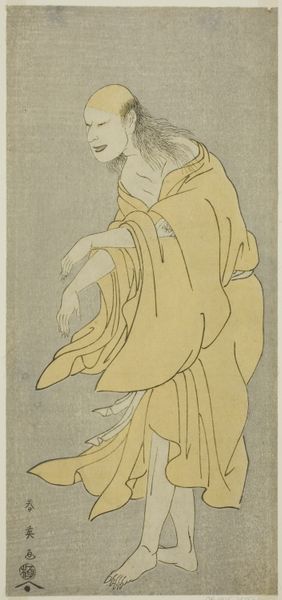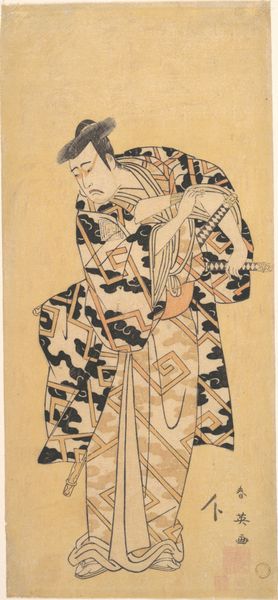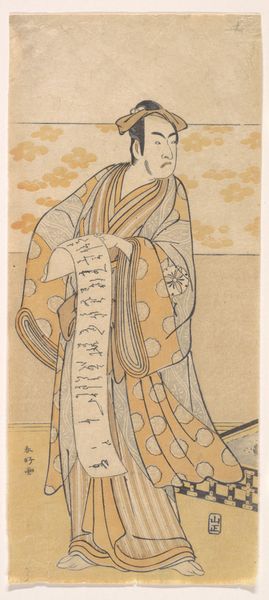
Young Lady Toying with the Tassel of Her Bed–net while a Cat Plays at Her Feet 1770 - 1790
print, ink, woodblock-print
#
portrait
#
ink painting
# print
#
asian-art
#
ukiyo-e
#
figuration
#
ink
#
woodblock-print
#
line
#
genre-painting
#
erotic-art
Dimensions: H. 26 3/8 in. (67 cm); W. 4 5/8 in. (11.7 cm)
Copyright: Public Domain
This woodblock print of a young woman and a cat was created by Isoda Koryūsai in Japan during the Edo period. The floating world aesthetic of the ukiyo-e tradition is evident in the woman's relaxed pose and the subtle eroticism of the loose kimono. These works were mass-produced and widely available, yet they often reflect the values of the ruling classes. Here, the woman’s leisure and refinement subtly support the social hierarchy. The presence of the cat, a domestic animal, reinforces the idea of a comfortable, ordered life. Interestingly, Koryūsai was a samurai before becoming an artist. His transition speaks to the changing social landscape of the time and the growing influence of merchant culture on the art world. As historians, we look beyond the surface appeal to understand the social and institutional forces that shape artistic production and reception. By studying Edo-period culture, including its literature, fashion, and economic systems, we can better understand the complex meanings embedded in this seemingly simple image.
Comments
No comments
Be the first to comment and join the conversation on the ultimate creative platform.













